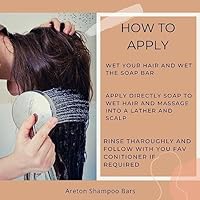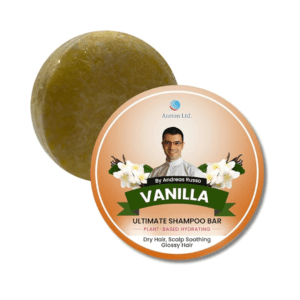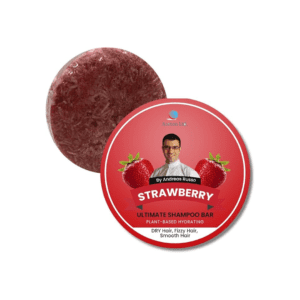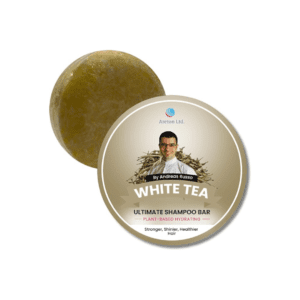What is Frizzy Hairs?
Frizzy hairs is characterized by strands that lack defined, smooth curls or waves. The hair stands away from the head in an uncontrolled, tangled mess, often caused by dryness, damage, or humidity exposure.
Frizz happens when the outermost layer of the hair cuticle becomes rough and lifts away from the hair. This causes strands to lose their defined pattern and clump together in frizzy pieces rather than forming smooth curls or waves.
Frizzy hairs is most common in those with naturally curly, coily, thick, or dry hair types. The bend of the hair follicle leaves curly hair more prone to frizzing. Coily and thick hair contains more strands per follicle, causing congestion and friction that can lead to frizz. Dry hair types lack moisture and oils that help keep cuticles flat and smooth.
Exposure to humidity is a leading cause of temporary frizz since moisture swells the hair, stretches cuticles, and breaks hydrogen bonds in the hair that normally hold curls and waves together. Hot and dry conditions can also degrade hair oils and lead to chronic frizz over time.
In summary, frizzy hair is a hair condition characterized by dry, damaged strands that lack defined curls and clump together in a tangled, fuzzy mess rather than forming smooth waves. It most commonly affects those with curly, coily, thick, or naturally dry hair.
Causes of Frizzy hairs
Frizzy hair is caused by a lack of moisture in the hair shaft. When hair lacks moisture, the cuticle layer can swell and lift up, creating a rough texture and frizzy appearance. The main causes of frizz include:
Lack of moisture – Dry hair is more prone to frizz since it absorbs moisture from the air. Shampoos can strip hair of its natural oils, leaving it dry and frizzy. Not properly conditioning hair after shampooing is another cause of dry, frizzy hair.
Humidity – Humid weather causes frizz by swelling the hair cuticle and allowing moisture into the hair shaft. The moisture causes the cuticle to swell and lift up. This is why hair frizzes more on humid, rainy days.
Hair damage – Chemical treatments like perms, relaxers, and dyes can damage the cuticle layer and cause frizz. Heat styling tools can also damage hair over time and lead to frizzy strands. The damaged cuticle lifts up and becomes porous, allowing humidity in.
Managing Frizzy hairs with Products
Leave-in conditioners, anti-frizz serums and oils, and smoothing creams can help tame frizzy hair.
Leave-In Conditioners
Leave-in conditioners provide hydration and nutrients to hair strands. They help seal the cuticle layer of the hair, preventing moisture loss that leads to frizz. Leave-in conditioners contain smoothing and hydrating ingredients like oils, silicones, proteins, and humectants. Apply a leave-in conditioner to damp hair after washing. Concentrate on the mid-lengths and ends of hair. Let it air dry or gently scrunch with a t-shirt.
Anti-Frizz Serums and Oils
Anti-frizz serums contain silicones and other lubricating ingredients that coat the hair shaft. This helps smooth the cuticle and prevent frizz. Apply a few drops of anti-frizz serum to damp or dry hair, avoiding the roots. Oils like argan, coconut, and marula can also tame flyaways and frizz when applied to damp hair. The oils help seal in moisture.
Smoothing Creams
Smoothing creams and styling creams create a barrier on the hair strands to block humidity. They usually contain hydrating ingredients like shea butter along with silicones and polymers to smooth the cuticle. Emulsify a small amount of styling cream in your hands, then evenly distribute through damp hair. Let air dry or blow dry with a round brush.
Managing Frizz with Styling
One of the easiest ways to reduce frizz is to be mindful of how you style your hair. Here are some tips:
Avoid rubbing hair vigorously with a towel – This can cause frizz and breakage. Instead, gently squeeze out excess moisture.
Let hair air dry – Air drying allows hair to dry smoothly and evenly, preventing frizz. Avoid blow drying on high heat.
Use a diffuser for curly hair – Diffusers distribute air flow gently and evenly. Attach a diffuser to the end of your blow dryer and hold it to your head upside down. This helps define curls and reduces frizz.
Apply styling products to damp hair – Styling products like leave-in conditioners and anti-frizz serums are most effective when applied to damp hair right after showering.
Use soft scrunchies or fabric hair ties – Rubber bands and tight hair ties can lead to kinks and breakage. Stick to gentle, soft hair ties.
Sleep on a silk pillowcase – The smooth surface of silk minimizes friction that can cause frizz and breakage overnight.
With some simple styling adjustments, you can tame frizz and enhance your hair’s natural texture. Embrace air drying, diffuse curly hair, and avoid rough handling for smooth, frizz-free hair.
Managing Frizz with Diet
What we eat can have a big impact on the health and appearance of our hair. Making sure your diet includes nutrients that support strong, hydrated strands can help tame frizz from the inside out.
Healthy Fats for Moisture
Foods rich in omega-3 fatty acids like salmon, avocados, and walnuts can help add moisture and shine to hair. The fats in these foods get incorporated into the hair strand, acting as a natural conditioner. Aim for 2-3 servings of healthy fats daily.
Protein for Strength
Hair is made mostly of a protein called keratin, so getting adequate protein from foods like eggs, chicken, fish, beans, and Greek yogurt gives your body the building blocks it needs to construct strong hair shafts resistant to breakage and frizz. Shoot for 20-30g of protein per meal.
Vitamins and Minerals
Vitamins like A, C, and E, along with minerals like iron, zinc, and selenium provide nutrients that enhance hair growth and repair damage. Focus on eating fruits, vegetables, nuts and enriching foods to obtain these essential micronutrients. A daily multivitamin can help fill any gaps.
Making nutrition a priority and eating a balanced diet with whole foods that offer hair-healthy compounds can make a difference in frizz management. It provides the raw materials for growing healthy, hydrated, frizz-resistant hair from within.
Managing Frizz with Routines
Having a good hair care routine can help minimize frizz and keep hair looking smooth. Here are some tips for frizz-fighting routines:
Regular Trims
Getting your hair trimmed regularly, every 6-8 weeks, helps reduce split ends and frizz. Split ends lead to more tangled, frizzy hair so keeping up with trims is key. Ask your stylist for a small trim just to neaten up split ends. Resist any urge to get several inches cut off, as keeping length will help weigh hair down and keep it smoother.
Deep Conditioning Treatments
Using a deep conditioning hair mask 1-2 times per week provides an extra dose of hydration and helps smooth the hair cuticle. Apply a nourishing, moisturizing mask like one containing shea butter, coconut oil, or argan oil. Allow it to soak in for at least 10-15 minutes with a shower cap or heat cap. Rinse out thoroughly and follow with a leave-in conditioner.
Protective Styling
Wearing low-manipulation hairstyles can help reduce frizz and friction. Styles like braids, twists, buns, or ponytails limit the hair’s exposure and keep strands together smoothly. Alternate the position of ponytails and partings to avoid breakage in one spot. Sleep in a loose braid or pineapple to protect hair overnight. Use soft scrunchies, fabric bands, and clips to avoid damage from tight elastics.
Managing Frizz with Humidity
Humidity can exacerbate frizzy hair. When humidity in the air is high, moisture is absorbed into the hair shaft, causing it to swell and frizz. Here are some tips for managing frizz on humid days:
Use humidity blocking products – There are products made specifically for blocking humidity and reducing frizz. Look for ingredients like silicones or oils that create a protective barrier around the hair. Apply these before going outside.
Avoid going outside on very humid days – When humidity levels are very high, it’s best to stay inside with air conditioning if possible. The cooler, dry air will help reduce frizz.
Use hair dryer on a cool setting – If you must go outside on a humid day, make sure to use a hair dryer on a cool setting when styling your hair. The heat from the dryer will cause more frizz. Stick to cooler air to get moisture under control.
Carry a small hair spray – Keep a small hair spray with you when out and about. If frizz starts to develop, you can quickly smooth it down. Look for anti-humectant and anti-frizz formulas.
Don’t touch or play with your hair – Resist the urge to run your fingers through your hair or play with it. That will worsen frizz by breaking up your style.
Use scarves or hats – Covering your hair with scarves, hats, or other accessories can protect it from humidity. Just avoid fabrics that could rub and cause static.
Embrace the frizz – Sometimes humidity is unavoidable. Rather than fight it, embrace your natural texture those days. Show off your frizzy locks with pride!
By using humidity-blocking products and being strategic with your hair care routine, you can reduce frizz, even when humidity is high. With some preparation, you can still have great hair days, no matter the weather.
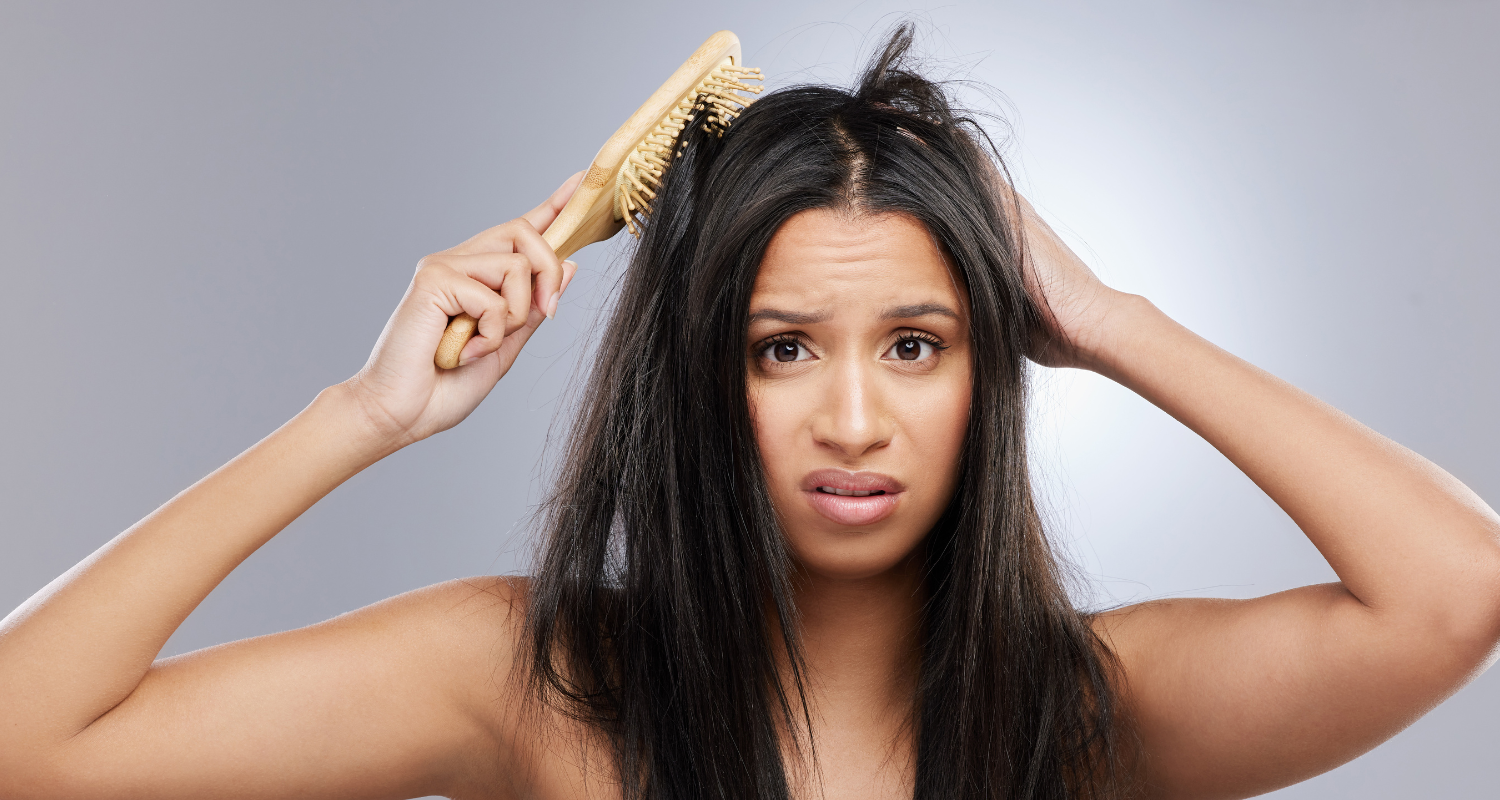
When to See a Professional
If you find you are unable to manage frizzy hair on your own, it may be time to seek professional help. Here are some signs it’s time to book an appointment:
Severely Damaged Hair
If your hair is extremely dry and damaged from overprocessing or heat styling, a professional may be able to recommend treatments to restore moisture and repair split ends. This type of severe damage can worsen frizz. A professional can evaluate your hair’s condition and determine the best course of treatment.
Wanting Keratin Treatment
Keratin treatments can help smooth frizz for up to a few months. However, these treatments contain harsh chemicals and should be done by a trained professional. Do not attempt to do a keratin treatment at home, as it can damage hair if not done properly. Seek out a reputable salon if you’re interested in trying this intensive frizz-fighting treatment.
Difficulty Managing at Home
If you’ve tried all the drugstore anti-frizz products and home remedies without success, it may be worthwhile to seek professional advice. A stylist can examine your hair and pinpoint solutions tailored to your unique hair type and needs. They may recommend salon-quality products or customized in-salon treatments to help tame frizz. Schedule a consultation to troubleshoot your frizz woes.
Don’t struggle with unmanageable frizzy hair on your own. Seek professional help if DIY efforts fail. A stylist can get your frizz under control.
Embracing Frizz
Frizz used to be seen as an undesirable hair trait that needed to be eliminated. However, in recent years, there has been a growing trend of frizz acceptance and embracing natural textures. More people are learning to work with their hair’s natural tendencies rather than fighting them.
Many celebrities have helped kickstart the movement of frizz positivity by confidently rocking their natural curls on the red carpet. Stars like Tracee Ellis Ross, Yara Shahidi, and Taraji P. Henson have shown that frizzy hair can look beautiful, stylish, and cool. Their influence has inspired people to ditch damaging straightening treatments and embrace the frizz.
Here are some tips for learning to rock your natural frizz:
Use the right products – Look for formulas specifically tailored for frizzy hair types, like creams or serums with moisturizing oils. This will help enhance and define curls rather than weighing them down.
Embrace the volume – Frizz can create fullness and volume in curly hair. Use some mousse or volumizing spray to boost your hair’s natural body.
Diffuse gently – Let your hair air dry as much as possible, then diffuse gently to enhance natural texture without causing more frizz.
Try wash-and-go styles – Washing and conditioning your hair, then letting it air dry naturally can create effortless frizz-enhanced curl definition.
Accessorize – Scarves, headbands, barrettes, and clips can add polish while also showing off your natural texture.
Flaunt the frizz – Have fun with your hair and recognize that the frizz is part of what makes your curls unique and beautiful. Confidence is the best accessory!
Summary
Frizzy hair is a common hair condition caused by a variety of factors like humidity, heat damage, improper hair care, and more. The main causes of frizz are exposure to humidity, using hair products with harsh chemicals, heat styling without protection, and not using conditioning treatments. The best at-home solutions for frizz are using deep conditioning masks weekly, avoiding brushing when dry, using anti-frizz serums and oils, protective styling, and avoiding heat tools. Seek professional help from a stylist if you’ve tried these solutions for several weeks without improvement. A stylist can analyze your hair and recommend personalized solutions like keratin treatments, haircuts to add layers, or certain chemical relaxers in severe cases. With the right products, routines, and styling techniques, most cases of frizz can be managed at home. But a stylist’s expertise can really help in stubborn, chronic cases.


